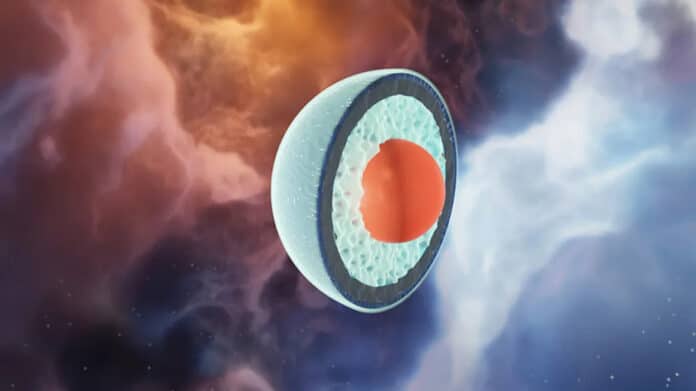You find the highest densities of matter in the current universe inside neutron-star cores. These stars are like giant atomic nuclei, with gravity pushing their cores to densities way higher than individual protons and neutrons.
These extreme densities make neutron stars fascinating for scientists studying particles and nuclear physics. A big question is whether the incredible pressure in their cores can squash protons and neutrons into a new kind called cold quark matter. In this exotic state, individual protons and neutrons don’t exist anymore.
In a new study, a team centered at the University of Helsinki offered a first-ever quantitative estimate for the likelihood of quark-matter cores inside massive neutron stars. Their analysis places the likelihood of enormous neutron stars hiding cores of deconfined quark matter between 80 and 90 percent.
For all neutron stars to be made entirely of nuclear matter, there would need to be a significant and abrupt change from nuclear to quark matter, much like how liquid water turns into ice. This rapid shift could make neutron stars unstable, potentially causing them to collapse into black holes even with a tiny quark-matter core.
An international collaboration involving scientists from Finland, Norway, Germany, and the US has made progress in understanding how we might confirm or rule out the existence of quark-matter cores in neutron stars. The key lies in determining the strength of the phase transition between nuclear and quark matter. This could be possible when we eventually record gravitational-wave signals from the final stages of a binary neutron-star merger.
To arrive at these new findings, scientists heavily relied on extensive supercomputer calculations using Bayesian inference. This statistical method involves comparing different model parameters directly with observational data to deduce their likelihood. The Bayesian aspect of the study allowed researchers to establish new limits for the properties of neutron-star matter, indicating a tendency toward conformal behavior near the cores of the most massive stable neutron stars.
Dr. Joonas Nättilä, one of the lead authors of the paper, describes the work as an interdisciplinary effort that required expertise from astrophysics, particle and nuclear physics, as well as computer science. He will start as an Associate Professor at the University of Helsinki in May 2024.
“It is fascinating to concretely see how each new neutron-star observation enables us to deduce the properties of neutron-star matter with increasing precision.”
Joonas Hirvonen, a Ph.D. student working under the guidance of Nättilä and Vuorinen, on the other hand, emphasizes the importance of high-performance computing:
“We had to use millions of CPU hours of supercomputer time to compare our theoretical predictions to observations and constrain quark-matter cores’ likelihood. We are extremely grateful to the Finnish supercomputer center CSC for providing us with all the resources we needed!”
Journal Reference:
- Annala, E., Gorda, T., Hirvonen, J. et al. Strongly interacting matter exhibits deconfined behavior in massive neutron stars. Nat Commun 14, 8451 (2023). DOI: 10.1038/s41467-023-44051-y
